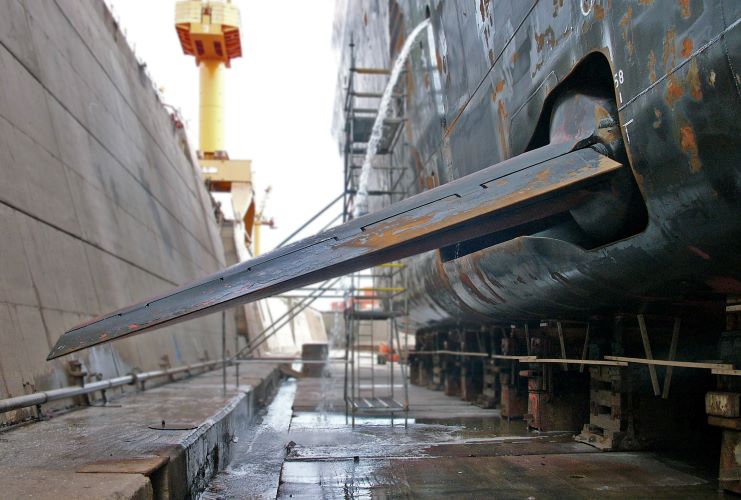How Does a Cruise Ship Stabilizer Work?

Cruise ships are a popular choice for vacationers seeking adventure and relaxation on the open sea. However, the comfort of passengers can be significantly affected by the ship’s motion, especially during rough weather. This is where cruise ship stabilizers come into play. These innovative devices are designed to minimize the ship’s rolling motion, ensuring a smoother and more enjoyable journey for everyone on board. By utilizing advanced engineering techniques, stabilizers enhance passenger comfort and safety, making them a vital component of modern cruise ship design.
Principles of Stabilization
The stabilization of a cruise ship is based on several key principles that counteract the effects of rough seas. Ships are constantly subjected to dynamic forces from waves and wind, which can cause rolling motions. This rolling, or side-to-side tilting, can lead to discomfort for passengers and operational challenges for the crew. To combat this, stabilizers are employed to calculate the ship’s speed and the prevailing sea conditions.
The primary goal of these stabilization techniques is to maintain a balance that keeps the ship stable and upright, even in unpredictable waters. This balance is crucial for avoiding maritime accidents and ensuring the safety of everyone on board. Stabilizers work by adjusting their position and angle in response to the ship’s movements, effectively counteracting the forces that cause rolling. By doing so, they help create a safer and more comfortable environment for passengers and crew alike.
Stabilizer systems can be categorized into active and passive systems. Active stabilizers use sensors to monitor the ship’s movement and adjust the fins in real time. In contrast, passive systems rely on the ship’s design and placement to mitigate roll. Both types of stabilizers play a significant role in enhancing the overall cruise experience, allowing passengers to enjoy their journey without the discomfort of excessive motion.
Types of Stabilizers
Cruise ship stabilizers are essential for minimizing roll and providing a comfortable journey. The most common type of stabilizer found on large cruise ships is the fin stabilizer. These fin-like protrusions extend from both sides of the vessel below the waterline. Controlled by a hydraulic system, they pivot to counteract the ship’s rolling motion caused by waves. The mechanism is typically computer-controlled, allowing for real-time adjustments that optimize stability during voyages.
Another type of stabilizer is the gyroscopic stabilizer. These systems utilize the principles of angular momentum and gyroscopic action to maintain a vessel’s stability. A rapidly spinning flywheel adjusts its orientation based on the ship’s motion. Unlike fin stabilizers, gyroscopic stabilizers do not protrude from the ship, which reduces the risk of damage and drag. This makes them an attractive option for many cruise lines.
Additionally, some ships employ anti-roll tanks. These tanks are designed to utilize the natural movement of water to counteract a ship’s roll. They stretch across the vessel and are filled with water that shifts in response to rolling. This passive stabilization method relies on gravity and simple physics rather than mechanical parts or hydraulics. While anti-roll tanks offer a quieter and maintenance-free solution, their effects may not be as immediate or precise as those of active stabilizers.
Impact and Importance
The impact of cruise ship stabilizers extends beyond passenger comfort; they also play a crucial role in enhancing safety and promoting fuel efficiency. By minimizing the ship’s roll during rough weather, stabilizers significantly reduce the risk of maritime accidents. This stability is essential for maintaining safe navigation and ensuring the security of personnel on board. With enhanced stability, the likelihood of accidents, such as falling cargo or slips and falls, is greatly diminished.
Moreover, stabilizers contribute to the overall operational performance of cruise ships. When the ship remains stable, it minimizes structural stress on the hull, prolonging its lifespan and reducing maintenance issues. This not only saves costs for cruise operators but also ensures a safer environment for passengers and crew.
Passenger comfort is another critical aspect enhanced by stabilizers. By controlling side-to-side motion, these devices help mitigate seasickness and discomfort, allowing guests to enjoy onboard amenities like dining and entertainment without interruption. A smoother journey increases the likelihood of positive reviews and repeat business, making stabilizer-equipped ships more attractive to travelers.
Finally, stabilizers also contribute to fuel efficiency. By maintaining a level orientation, they optimize engine performance and reduce resistance, leading to lower fuel consumption. This reduction in fuel use is closely linked to a decrease in greenhouse gas emissions, making stabilizers an essential component of sustainable cruise operations. As the shipping industry increasingly focuses on environmental responsibility, stabilizers offer a way to enhance both efficiency and ecological stewardship.
